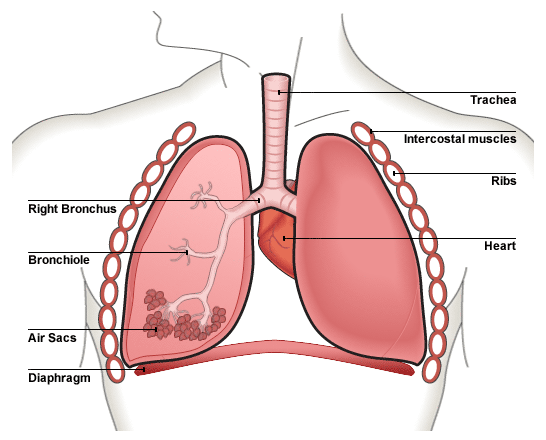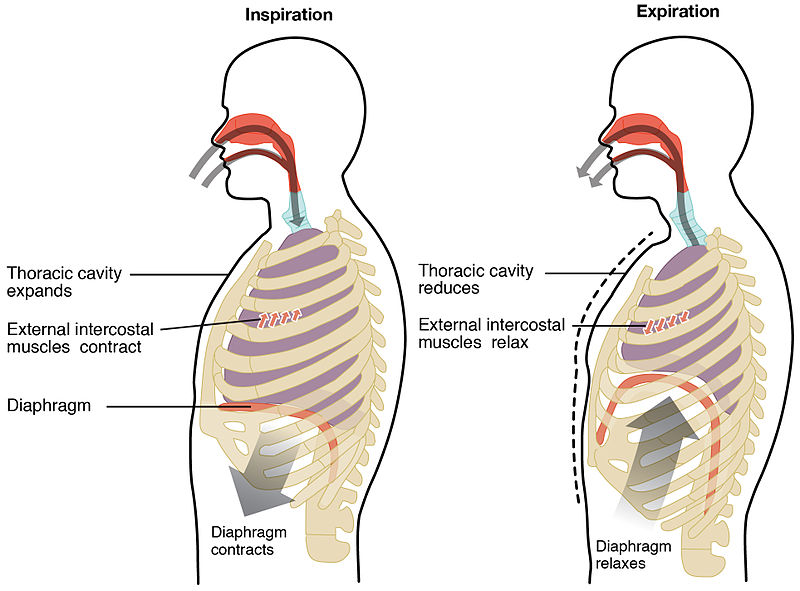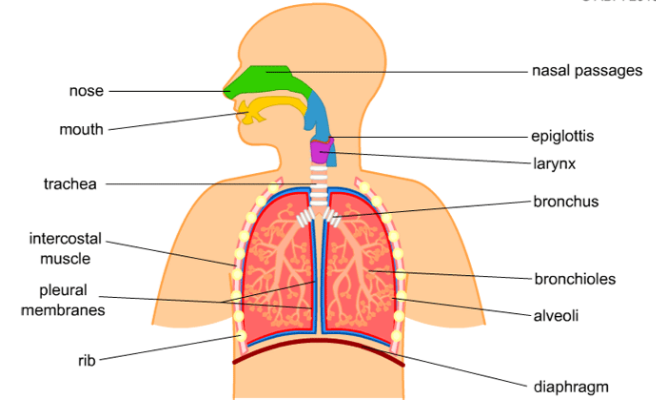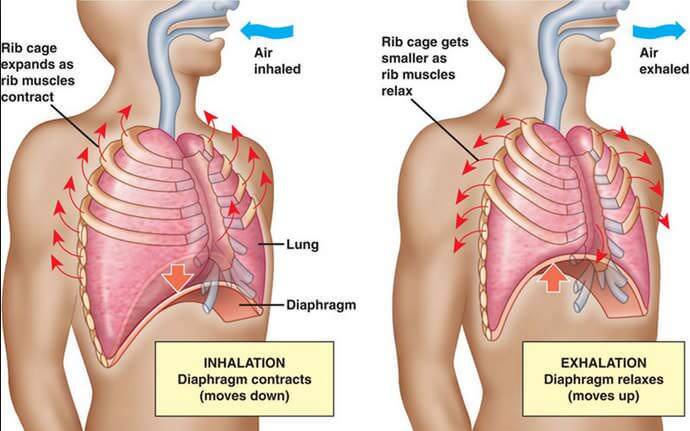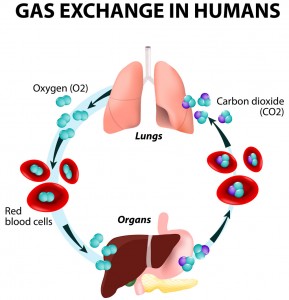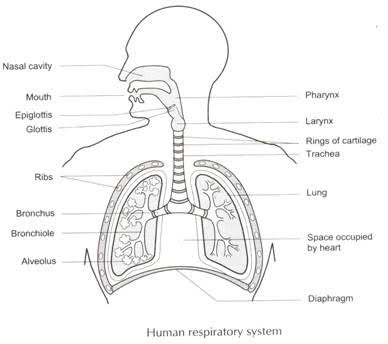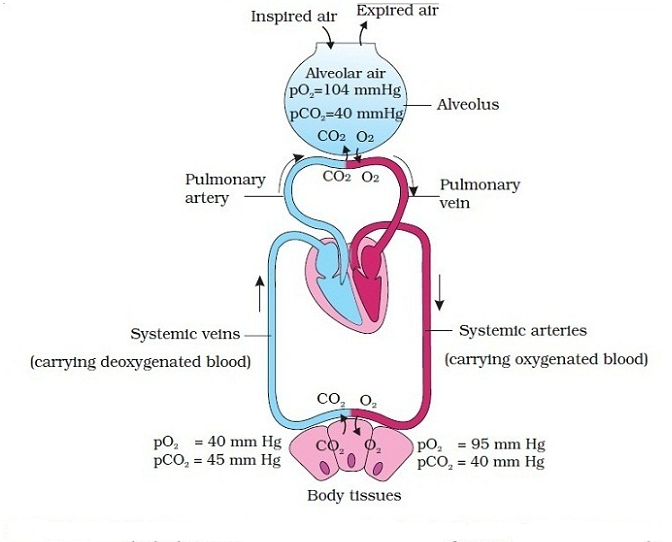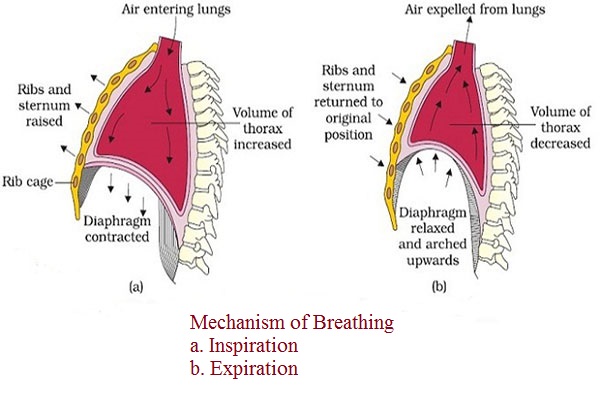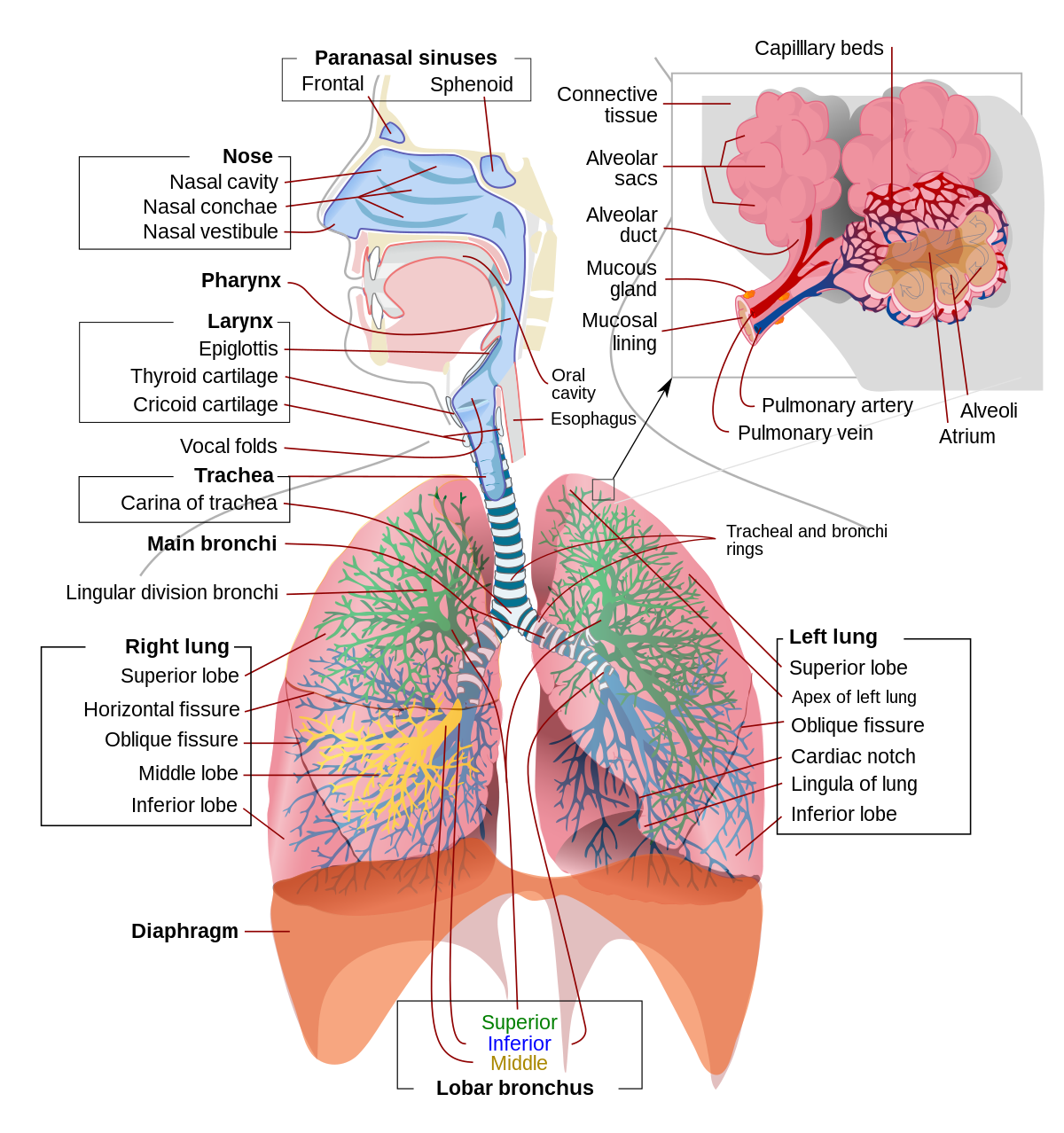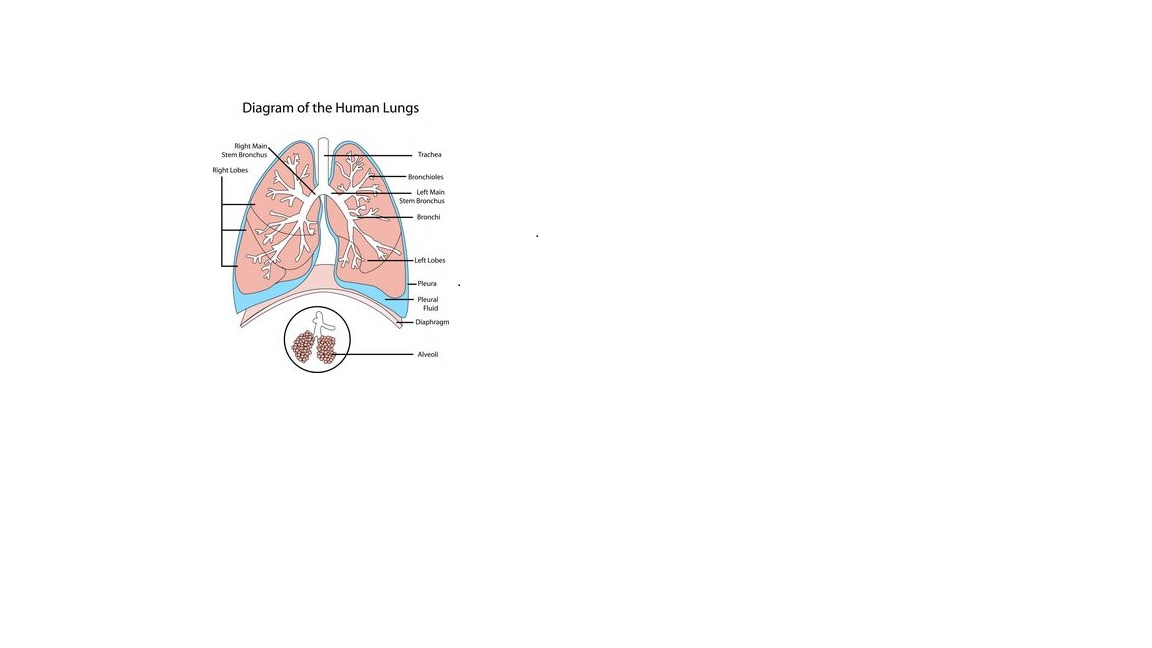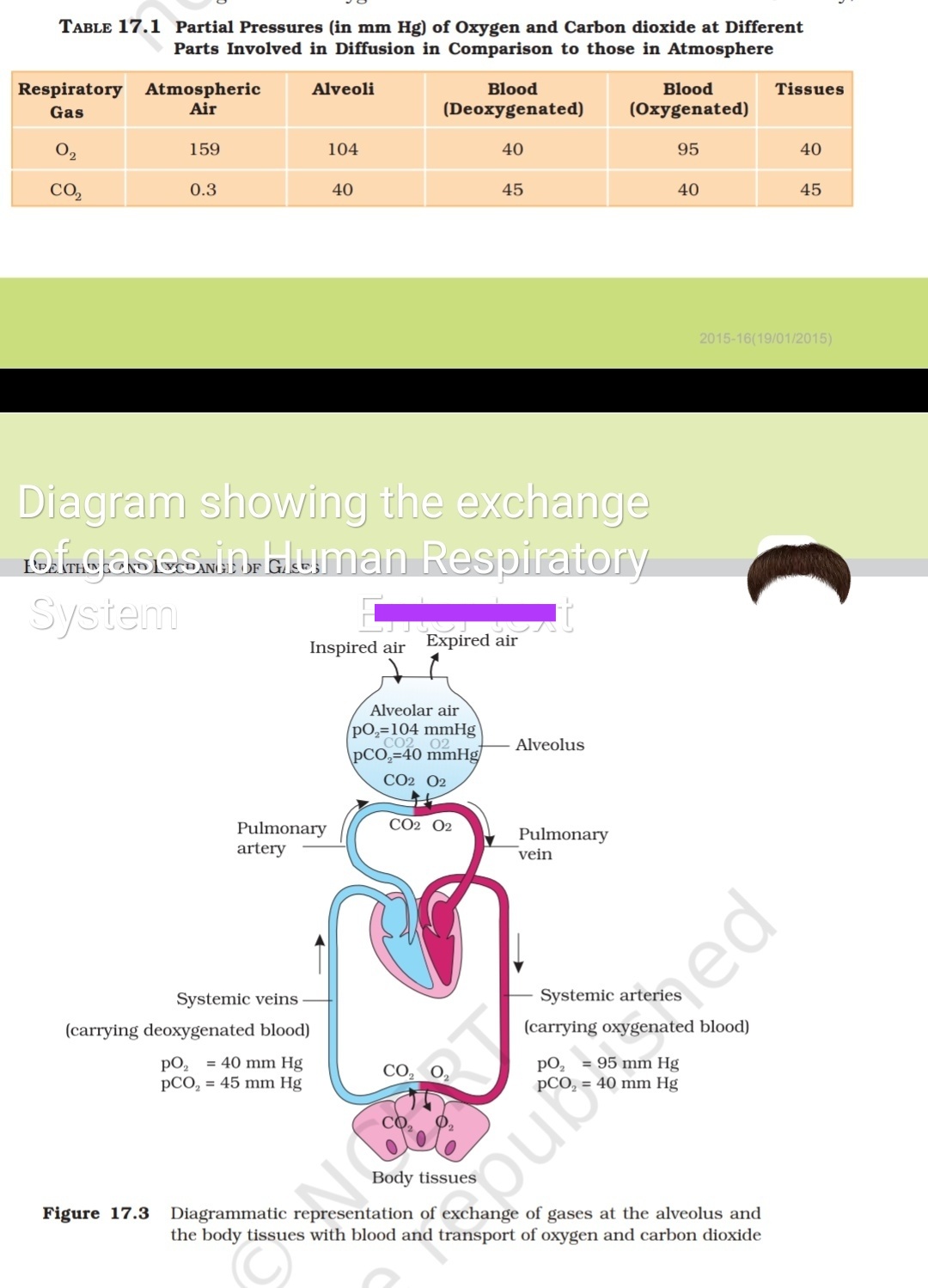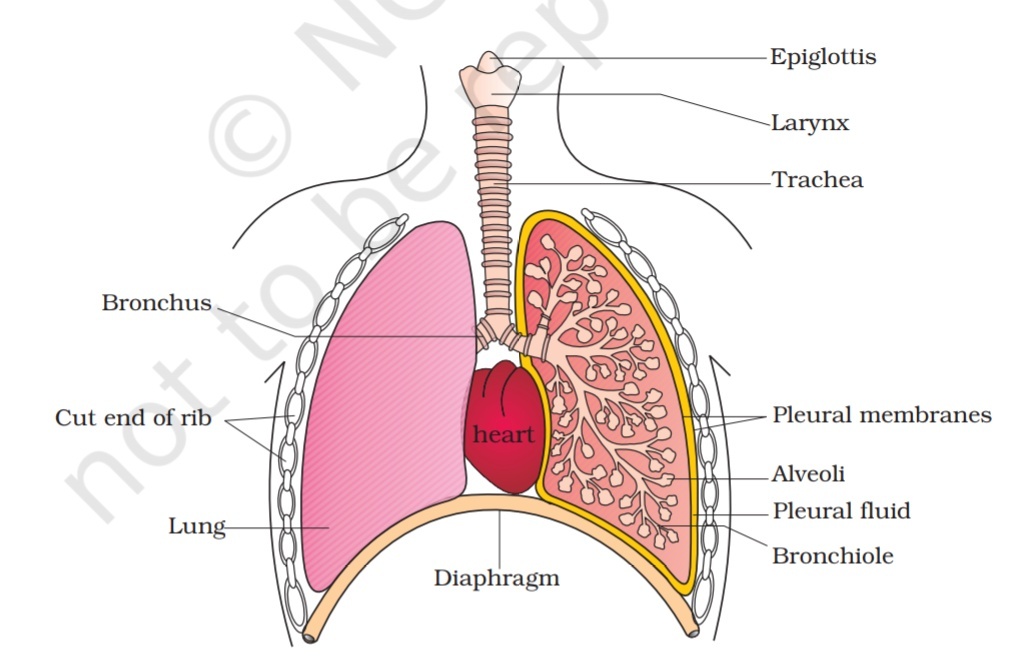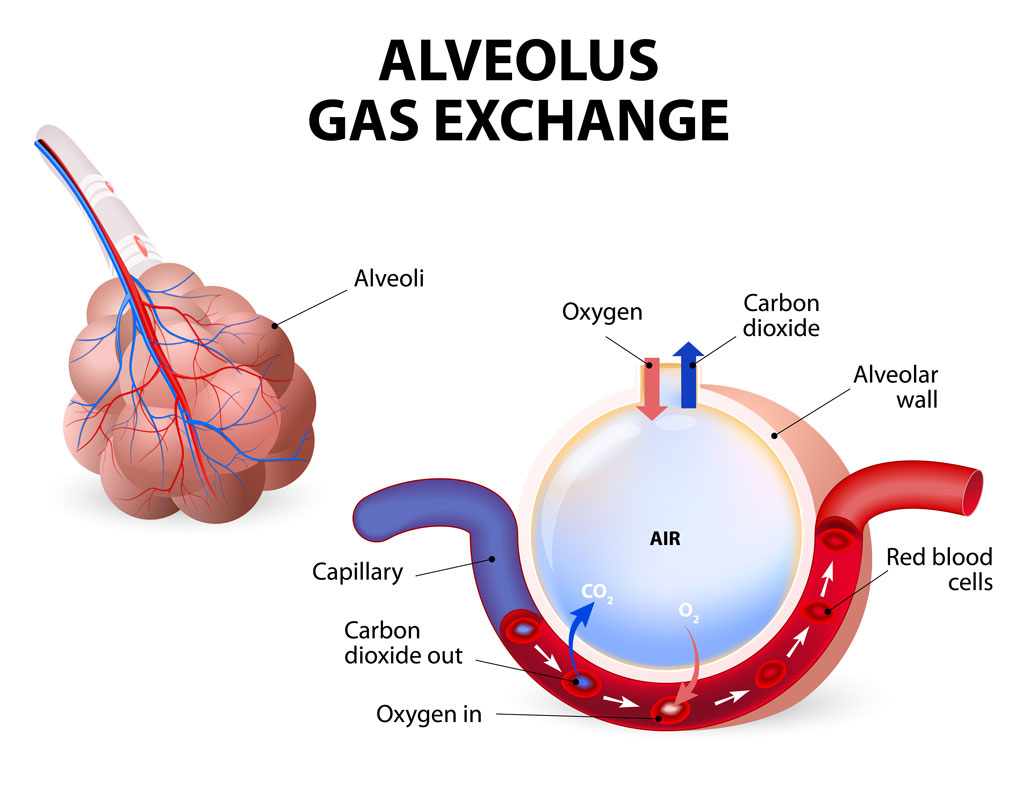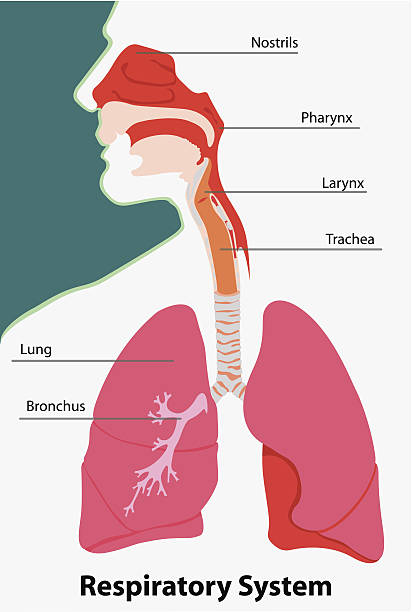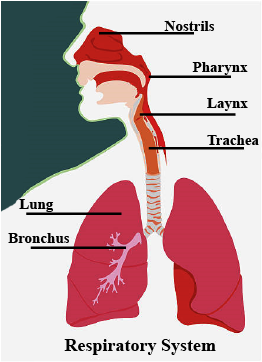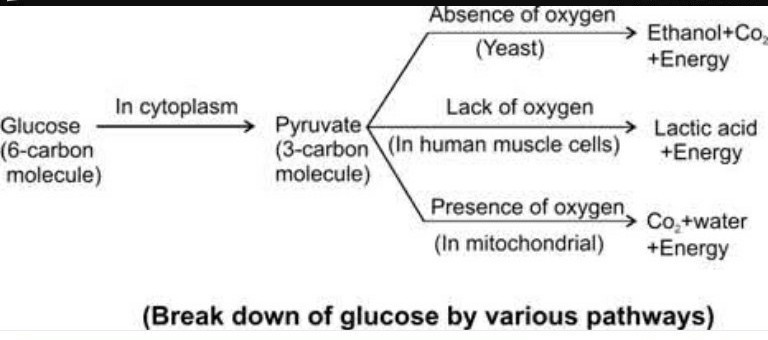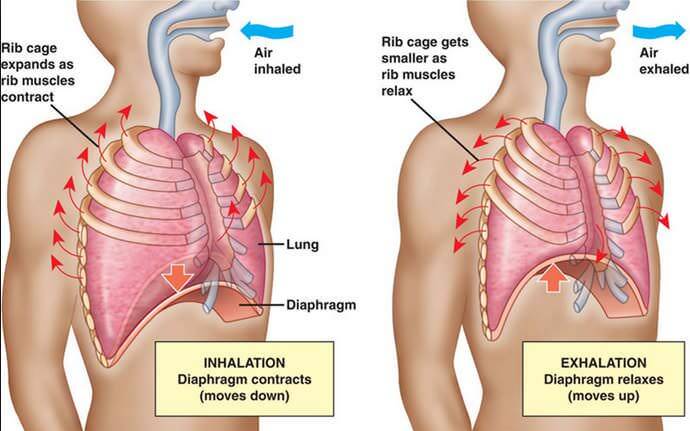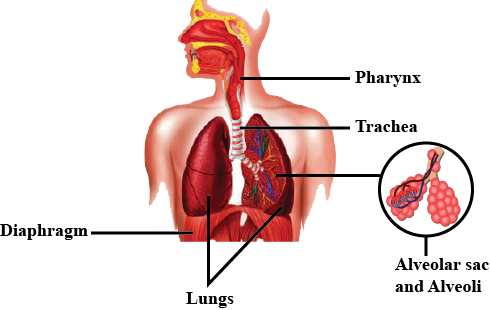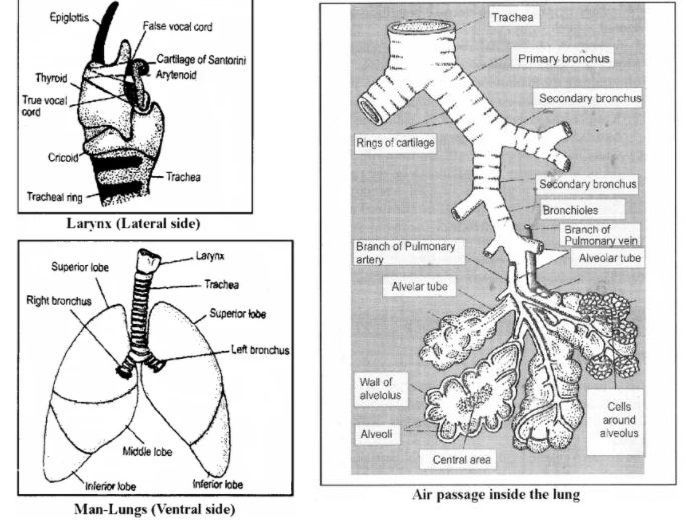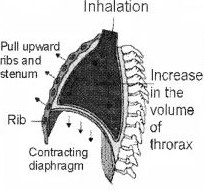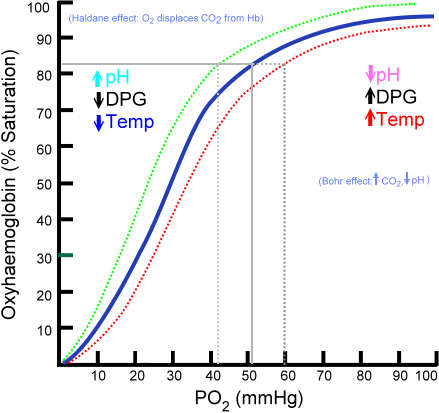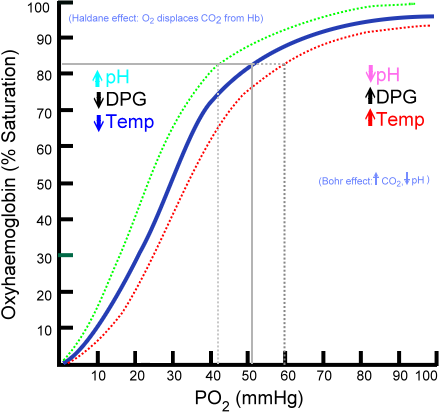Breathing And Exchange Of Gases - Class 11 Medical Biology - Extra Questions
Mention a cause and symptom of each of the following.
(i) Emphysema
(ii) Renal calculi
(iii) Diarrhoea
Draw a neat labelled diagram of lungs in man.
What is the role of epiglottis and diaphragm in respiration?
With regard to the respiratory system and the process of respiration in man, answer the following questions:
Name the two muscles that help in breathing.
How are the human lungs best designed for the terrestrial mode of respiration?
Describe how the ventilation of the lungs will change while the athlete exercise:
What are the functions of:
Larynx, trachea, bronchi and lungs in humans?
Name the structure that control breathing?
Using what you know about particle theory,explain how oxygen diffuses from an air sac into the blood.
Maximum amount of oxygen is lost from the blood in the?
What is the role of epiglottis in respiration ?
How do alveoli help in gas exchange?
Given below is an example of a certain structure and its special functional activity:
Kidney and excretion.
Fill in the blanks on a similar pattern:
C-shaped cartilage rings and .........
State one function of pleural fluid.
How is the respiratory passage kept free of dust particles?
STRUCTURED/APPLICATION/SKILL TYPE
Given alongside is a diagrammatic sketch of a kind of part in human lungs :
What do the arrows 5 & 6 indicates ?

Give suitable explanations for the following:
Why does gaseous exchange continue in the lungs even during expiration?
Given below is an example of a certain structure and its special functional activity:
Kidney and excretion.
Fill in the blanks on a similar pattern:
Alveoli and .........
VERY SHORT ANSWER TYPE
Match the items in Column I with the ones most appropriate in Column II. Rewrite the matching pairs:
| Column I | column II | ||
| (a) | Alveoli | (i) | where aerobic respiration takes place |
| (b) | Bronchioles | (ii) | lined with hair |
| (c) | Nasal chamber | (iii) | diffusion of gases |
| (d) | Bronchi | (iv) | small air tubes |
| (v) | An inverted Y-shaped tube | ||
| (vi) | A common passage for food and air |
STRUCTURED/APPLICATION/SKILL TYPE
Given alongside is a diagrammatic sketch of a kind of part in human lungs :
Name the parts numbered 1-4.
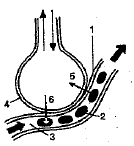
Mention any two occupational respiratory disorders and their causes in human beings ?
Write a note on the membranous covering of the lungs?
The mucus in trachea is produced by which part?
Explain the mechanism of inspiration?
Name the process of inhalation and exhalation of air.
Why do the walls of trachea not collapse when there is less air in it?
What is the role of mouth in respiration?
Write the names of inspiratory muscles.
How are lungs designed in human beings to maximise the area for exchange of gases ?
Distinguish between inspiratory capacity and expiratory capacity.
What will be the pO2 and pCO2 in the atmospheric air compared to those in the alveolar air?
(i) pO2 lesser, pCO2 higher(ii) pO2higher, pCO2 lesser (iii) pO2higher, pCO2 higher(iv) pO2 lesser, pCO2 leser
Distinguish between vital capacity and total lung capacity.
How is respiration regulated?
Distinguish between
(a) IRV and ERV(b) Inspiratory capacity and Expiratory capacity(c) Vital capacity and total lung capacity
How are the alveoli designed to maximise the exchange of gases?
Air leaves the tiny sacs in the lungs to pass into capillaries. What modification is needed in the statement?
State the difference between the two. Nasal cavity and ear canal.
Why is the air entering the lungs dust free?
(a) Draw a labelled diagram of human respiratory system.
(b) Explain the transportation of oxygen and carbon dioxide in human beings.
Explain how gaseous exchange takes place at alveoli and explain the regulation of respiration by brain.
Write the name of four respiratory disorders with symptoms.
What is respiration? Explain the process of respiration in human beings. (Figure not required)
In earthworm, haemoglobin is present in
Explain the process of inspiration and expiration under normal conditions.
Explain inspiration and expiration.
Describe any four occupational respiratory disorders.
Describe disorders of respiratory system.
Explain in brief transport of CO2 in respiration.
Write the two functions of pericardial fluid.
How does the transportation of oxygen occur through blood?
Why does an athlete breathe faster and deeper than usual after finishing the race?
What are mucus secreting cells?
Explain the process of inspiration under normal conditions.
Diffusion of gases occurs in the alveolar region only and not in the other part of respiratory system. Why?
Describe the mechanism of respiration in man.
What is the breathing rate in man?
Discuss the transport of gases (O2 and CO2) in the blood.
What is partial pressure? How does it help in gaseous exchange during respiration?
What is tidal volume?
How does exchange of respiratory gases take place in the alveoli or lungs?
Choose the odd one out:
Oxyhaemoglobin, Carbaminohaemoglobin, Hypoxia, Carboxyhaemoglobin
Name the body structure concerned with the given functional activity:
Protects the lungs from mechanical injuries
Choose the odd one out in each of the following groups of four items each:
Hairy, Moist, Nostril, Vocal cord.
Given below is an example of a certain structure and its special functional activity:
Kidney and excretion.
Fill in the blanks on a similar pattern:
Pleura and .........
State one function of the following:
Ciliated epithelium lining the respiratory tract
State one function of each of the following:
Intercostal muscles
Given below is an example of a certain structure and its special functional activity:
Kidney and excretion.
Fill in the blanks on a similar pattern:
Epiglottis and .........
Match the items in Column A with those in Column B.
| Column A | Column B | ||
| A. | Cartilaginous | 1. | Epiglottis |
| B. | Large surface area | 2. | Diaphragm |
| C. | Breathing movements | 3. | Bronchi |
| D. | Voice | 4. | Alveoli |
| E. | Complemental air | 5. | Larynx |
| F. | Swallowing | 6. | Extra inhalation |
Give suitable explanations for the following:
Breathing through the nose is said to be healthier than through the mouth.
STRUCTURED/APPLICATION/SKILL TYPE
The volume of air in the lungs and the rate at which it is exchanged during inspiration and expiration was measured.
The following diagram shows a group of the lung volumes and capacities:
Study the diagram carefully and explain briefly the following:
Tidal volume
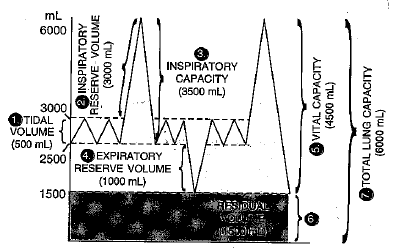
Starting from the nostrils, trace the path in sequence which the inspired air takes until it reaches the air sacs.
Differentiate between the following pairs on the basis of the aspect given in the brackets.
Respiration and breathing (organs involved)
Fill in the blanks with approriate words.
Each haemoglobin molecule can carry .......... molecules of oxygen, one in each ..........
Fill in the blanks with approriate words.
Lungs are covered with the covering of ..........
Fill in the blanks with approriate words.
Volume of air inspired and expired in a breath in normal respiration by man is called ..........
Fill in the blanks with appropriate words.
A mammal ventilates its lungs by moving it's ........... and ..........
A mammal ventilates its lungs by moving it's ........... and ..........
Fill in the blanks with approriate words.
Glottis is closed during swallowing of food bolus by ..........
STRUCTURED/APPLICATION/SKILL TYPE
The volume of air in the lungs and the rate at which it is exchanged during inspiration and expiration was measured.
The following diagram shows a group of lung volumes and capacities.
Study the diagram carefully and explain briefly the following:
Inspiratory reserve volume
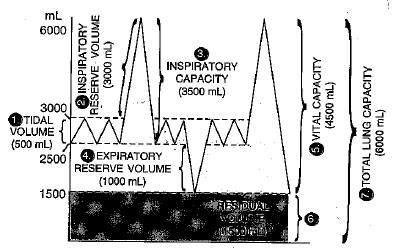
Fill in the blanks with approriate words.
Sound is produced by vibrations of .......... located in the ..........
STRUCTURED/APPLICATION/SKILL TYPE
The volume of air in the lungs and the rate at which it is exchanged during inspiration and expiration was measured.
The following diagram shows a group of lung volumes and capacities.
Study the diagram carefully and explain briefly the following:
Expiratory reserve volume
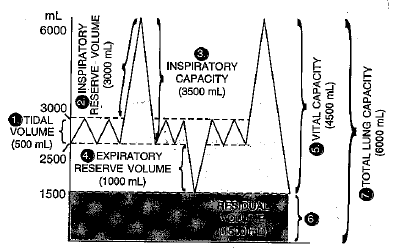
The metal associated with haemoglobin protein is ..........
Fill in the blanks with approriate words.
In humans, the trachea is strengthened by incomplete .......... rings.
Fill in the blanks with approriate words.
Exhalation from the lungs takes place when the size and pressure of the thoracic cavity is ..........
Fill in the blanks with approriate words.
Inflammation in the outer covering of lungs is known as ..........
Fill in the blanks with approriate words.
In lungs, the inspired air ultimately reaches to ..........
Fill in the blanks with approriate words.
Lungs lie in the thoracic cavity separated by .......... from the abdominal cavity
Fill in the blanks with approriate words.
The most characteristic feature of haemoglobin is its ability to combine reversibly with ..........
Very short answer type.
What term is used for the volume of air breathed in and out during each normal effortless respiration?
Very short answer type.
Name the structure that contains vocal cords.
Very short answer type.
Which structures are part of the conducting portion of the respiratory system?
Very short answer type.
How does the epiglottis prevent foods and liquids from entering the larynx?
Discuss the significance of haemoglobin in respiration.
Differentiate between external respiration and internal respiration.
Short / long answer type questions.
Draw a neat labelled diagram of human respiratory system.
Very short answer type.
How many molecules of oxygen can one haemoglobin molecule transport?
Give reasons for the right and left shift in the oxygen–hemoglobin dissociation curve.
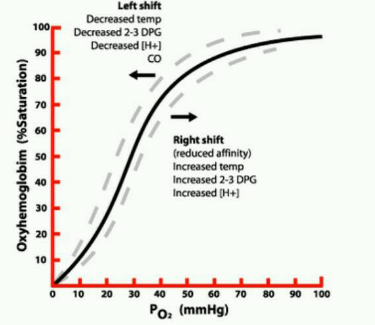
Short / long answer type questions.
Give the definition and normal values of lung volumes and lung capacities.
Short / long answer type questions.
Gaseous exchanges continue in lungs without interruption even during expiration. Explain.
Very short answer type.
Why are the right and left lungs slightly different in shape?
Dissociation of oxyhaemoglobin is more in an active tissue than in a less active one. Give reason.
Short / long answer type questions.
Man can live without food for a few days but cannot live without oxygen for even a few minutes. Why?
Match the terms to these definitions.
Anaerobe, aerobe, kiss of life, spirograph, inspiration, chloride shift, tidal volume, oxygen debt tidal air.
.......... The drawing in of the breath
Match the terms to these definitions.
Anaerobe, aerobe, kiss of life, spirograph, inspiration, chloride shift, tidal volume, oxygen debt tidal air.
.......... That air which is inspired and expired during normal breathing.
When you go far a trek/trip to any high altitude places, you are advised to take it easy and rest for the first two days. Comment giving reasons.
Give the differences between right and left lungs of humans.
Draw a schematics representation of transport and exchange of oxygen and carbon dioxide in human body.
Identify and describe the function of the parts marked P,Q,R and S
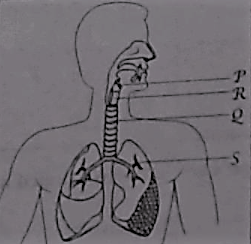
Explain the process of external respiration.
Name the sound producing organ of human being?
Describe the mechanism of respiration in humans.
Give reason why alveoli are surrounded by blood capillaries?
Explain the mechanism of inspiration.
Explain how does the air we breathe in, gets cleaned while passing through the nasal passage.
Write the factors which affect rate of diffusion of O2 and CO2 in alveoli.
Respiratory surface of animals must always be moist. Why?
Explain the respiratory volumes and capacities.
What is oxygen dissociation curve? List the factors which result in causing this curve.
List the functions of Nasal Cavity.
Describe exchange of gases at alveolar level.
Observe the following equation given and write a short note on it.
Hb+4O2→Hb(O2)4 (In lungs)
Hb(O2)4→Hb+4O2 (In tissues)
Which organ is called voice box?
Describe in brief the function of ribs and diaphragm in breathing.
Many persons like to use asthma as an excuse for not being able to do well in sports. Try telling them about Down Fraser, who was the first women to break 60 sec in 100 m freestyle swimming. The first women to win four Olympic gold medals and the first swimmer to win the same event in three consecutive Olympics was asthmatic.On the basis of the above passage, answer the following question..
i) Describe her achievements in the field of swimming.
Mechanism of breathing very among different groups of animals depending on :
Many persons like to use asthma as an excuse for not being able to do well in sports. Try telling them about Down Fraser, who was the first women to break 60 sec in 100 m freestyle swimming. The first women to win four Olympic gold medals and the first swimmer to win the same event in three consecutive Olympics was asthmatic.
On the basis of the above passage, answer the following question.
i) What do you mean by asthma?
Explain respiratory system of human.
What is asthma?
Briefly explain the structure of human lungs.
Describe the different respiratory organs found in insects and human beings.
Discuss about the process of inspiration.
Which row in the table shows the correct percentage of oxygen in atmospheric and exhalend air ?
| Atmospheric air / % | Exhaled air /% | |
| A | 78 | 21 |
| B | 21 | 16 |
| C | 16 | 4 |
| D | 4 | 0.04 |
Explain the process of exchange of gases with the help of a diagrammatic representation of the human respiratory system.
With the help of labelled diagram explain the structure of human respiratory system.
The respiratory centre may release motor impulses of faster breathing due to?
Why is it better to breath through your nose than your mouth?
Describe the human respiratory system.
Fill in the blanks on a similar pattern.
a) Alveoli and ......
b) Mitochondria and .....
c) Epiglottis and .....
What would happen if the lungs fail to work?
Where does the blood absorb oxygen in the human body?
Fill in the blank on a similar pattern.
Pleura and ________.
How does the mechanism of production of sounds in birds differ from that in human beings?
Give an account of the disorder of human respiratory system.
Name the structure which is commonly called sound box
With regard to the respiratory system and the process of respiration in man, answer the following question.
Name the two muscles that help in breathing.
What will happen if the respiratory tract is not moist?
What are the functions of the following in breathing?
Abdominal muscles.
Give appropriate biological/technical terms for the following.
The membrane that encloses the lungs.
Why are alveoli so small and uncountable in numbers?
Are both lungs similar in size?
How is oxygen and carbon dioxide transported in human body?
Which cartilage of larynx forms "Adam's apple" in man?
Read the following table and answer the following questions.
| Sl. No. | Structure | Location |
| 1. | Tricuspid valve | Right auriculo-ventricular aperture |
| 2. | Guard cells | Epidermis of leaves |
| 3. | Glomerulus | Nephron |
| 4. | Alveoli | Lungs |
| 5. | Acrosome | Above the head of a sperm |
Describe respiration in human beings with a labelled diagram?
Draw neat and labeled diagram.
Respiratory system
Respiratory system
What is epiglottis?
Complete the following table.
| Organ system | Organs | Functions | |
| 1. | Respiratory | ||
| 2. | Circulatory system |
Fill in the blanks using appropriate words given in the bracket.
_________ is present between thoracic and abdominal cavity.
_________ is present between thoracic and abdominal cavity.
Explain the three pathways of breakdown in living organisms.
Fill in the blanks :
Main source of sound in humans is ...........
Comment on main functions of nose.
Explain the significance of trachea, bronchioles, lungs and respiratory muscles in human respiratory system.
The voice box contains how many cartilages?
How does pharynx help in respiration?
Explain the role of neural system in regulation of respiration.
Name the important parts involved in creating a pressure gradient between lungs and the atmosphere during normal respiration.
Choose the odd one out in each of the following groups of four items each:
(a) Trachea, Bronchus, Alveolus, Diaphragm.
(b) Ethyl alcohol, Carbon dioxide, Starch, Oxygen absence.
(c) Diffusion, Respiratory gases, Alveoli, Capillary network.
(d) Trachea, ciliated epithelium, mucus, diffusion.
(e) Oxyhaemoglobin, carbaminohaemoglobin, Hypoxia, Carboxyheamoglobin.
(f) Hairy, Moist, Nostril, Vocal cord.
Explain the transport of O2 and CO2 between alveoli and tissue with diagram.
Match the lung capacities in Column I with the quantities given in Column II.
| Column I | Column II |
| A. Residual air | 4500 mL |
| B. Vital capacity | 6000 mL |
| C. Total lung capacity | 1500 mL |
| D. Dead air space | 150 mL |
Explain breathing mechanism.
Differentiate between
(a) Inspiratory and expiratory reserve volume
(b) Vital capacity and total lung capacity
(c) Emphysema and occupational respiratory disorder
Give suitable explanations for the following:
(a) Breathing through the nose is said to be healthier than through the mouth.
(b) Why does gaseous exchange continue in the lungs even during expiration?
(c) Why does a person feel breathlessness at higher altitudes?
(d) Why do you shiver and why do your teeth chatter when it is very cold in winter?
Match the items in Column A with those in Column B.
| Column A | Column B | |
| Cartilaginous | Epiglottis | |
| Large surface area | Diaphragm | |
| Breathing movements | Bronchi | |
| Voice | Alveoli | |
| Complemented air | Larynx | |
| Swallowing |
|
What is the respiratory surface?
Give suitable explanations for the following:
(i) One should breathe by nose and never by mouth.
(ii) Hands must be washed before eating food.
(iii) Eating places must be kept free of flies.
With regard to the respiratory system and the process of respiration in man, answer the following questions:
(a) Name any two muscles that help in breathing.
(b) Briefly describe how the above mentioned muscles help in the inspiration of air.
(c) Give the overall chemical equation to represent the process of respiration in humans.
(d) What is meant by:
1. Residual air 2. Dead air space
Match the items in Column I with the ones most appropriate in Column II. Rewrite the matching pairs:
| Column I | Column II |
| (a) Alveoli | (i) where aerobic respiration takes place. |
| (b) Bronchioles | (ii) lined with hair. |
| (c) Nasal chamber | (iii) Diffusion of gases. |
| (d) Bronchi | (iv) small air tubes. |
| (v) An inverted Y-shaped tube. | |
| (vi) A common passage for food and air. |
What are the functions of the following in breathing?
(a) Ribs
(b) Diaphragm
(c) Abdominal muscles
Given below is an example of a certain structure and its special functional activity:
Kidney and excretion
Fill in the blanks on a similar pattern.
(a) Alveoli and ___________.
(b) Mitochondria and ___________.
(c) Epiglottis and ___________.
(d) Pleura and ___________.
(e) Diaphragm and ___________.
(f) 'C' shaped cartilage rings and __________.
The volume of air in the lungs and the rate at which it is exchanged during inspiration and expiration was measured. The following diagram shows a group of the lung volumes and capacities:
Study the diagram carefully and explain briefly the following:
(a) Tidal volume.
(b) Inspiratory reserve volume.
(c) Expiratory reserve volume.
(d) Vital capacity.
(e) Residual volume.
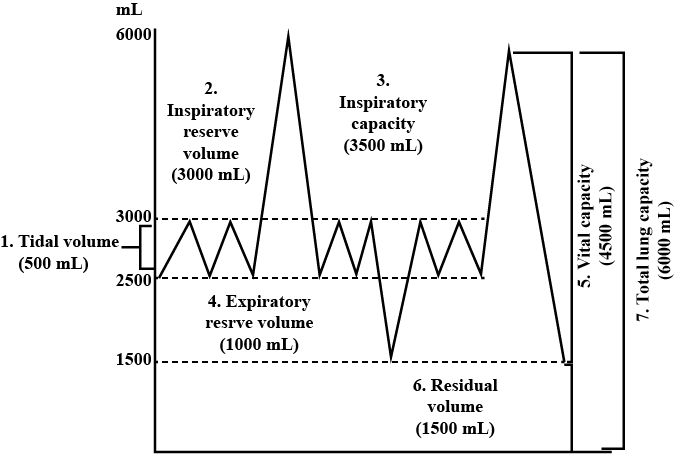
Write short notes on:
Respiratory volumes
Draw a diagram of human respiratory system and label - pharynx, trachea, lungs, diaphragm and alveolar sac on it.
What is Emphysema disease? How it can be prevented?
What is expiratory reserve volume?
Describe the human respiratory system.
Explain the process of inspiration.
What is inspiratory reserve volume?
List three characteristics of lungs which make it an efficient respiratory surface.
What is a tidal volume? Find out the tidal volume (approximate value) for a healthy human in an hour.
Diffusion of gases occurs in the alveolar region only and not in the other parts of respiratory system. Why?
Define oxygen dissociation curve. Can you suggest any reason for its sigmoidal pattern?
How are alveoli designed to maximize the exchange of gases?
Explain the mechanism of gaseous exchange at branchiole level.
How gases exchange takes place at blood level?
What will be the pO2 and pCO2 in the atmospheric air compared to those in the alveolar air? (i) pO2 lesser, pCO2 higher (ii) pO2 higher, pCO2 lesser (iii) pO2 higher, pCO2 higher (iv) pO2 lesser, pCO2 lesser.
What is tidal volume? Find out the tidal volume(approximate value) for a healthy human in an hour time?
Distinguish between IRV and ERV.
Very short answer type.
What is the normal value of tidal volume, residual volume, and total lung capacity in man?
Fill in the blanks with approriate words.
Alveolar PO2 is .......... than the venous PO2 while arterial PO2 is .......... than the alveolar PO2.
Fill in the blanks with appropriate words.
Pseudostratified epithelium lines the .......... tract while transitional epithelium lines the .......... tract.
What is the maximum number of O2 molecules which one haemoglobin molecule can carry?
Describe oxygen-haemoglobin dissociation curve.
Short / long answer type questions.
What are the requirements of a surface to be highly efficient for gaseous exchange? How has this efficiency increased from fish to mammals?
Short / long answer type questions.
Differentiate between bronchus and bronchiole.
Short / long answer type questions.
How many milliliters of CO2 are in 100 ml of deoxygenated blood at rest, and how many milliliters of O2 are in 100 ml of oxygenated blood during strenuous exercise?
Short / long answer type questions.
Oxygen enters the blood from the alveolar air but carbon dioxide leaves the blood to enter the alveolar air. Explain.
Very short answer type.
In what way pulmonary vein is different from other veins?
Short / long answer type questions.
Oxygenation of blood promotes the release of CO2 from the blood in lungs. Explain.
Very short answer type.
Name the sites of external respiration inside lungs.
Differentiate between.
Inspiratory capacity and expiratory capacity
Very short answer type.
What is a pulse ? Where is it taken?
Short / long answer type questions.
How is oxygen transported in the blood and released in the tissues?
What is respiration? Write a detail note on human respiratory organs.
Give a diagrammatic overview of the respiratory tree.
Match the column:
| Column I | Column II |
| (a) Larynx | (p) Lid of larynx |
| (b) Trachea | (q) Air sacs |
| (c) Alveoli | (r) Voice box |
| (d) Epiglottis | (s) Wind pipe |
| (t) Common passage |
Many persons like to use asthma as an excuse for not being able to do well in sports. Try telling them about Down Fraser, who was the first women to break 60 sec in 100 m freestyle swimming. The first women to win four Olympic gold medals and the first swimmer to win the same event in three consecutive Olympics was asthmatic.On the basis of the above passage, answer the following question.i) Mention the qualities, which might have helped her to win medals at three Olympics consecutively.
List any three differences between tracheids and trachea
Name the body structure concerned with the given functional activity.
Protects the lungs from mechanical injuries.
Fill in the blank on a similar pattern.
Alveoli and ________.
Name the body structure concerned with the given functional activity.
Provides actual diffusion of respiratory gases in lungs.
State one function of the following.
Ciliated epithelium lining the respiratory tract.
State one function of the following.
Pleural fluid.
Explain mechanism of breathing stepwise with special mention on role of various muscles involved in breathing.
State one function of the following.
Intercostal muscles.
Fill in the blank on a similar pattern.
'C' shaped cartilage rings and ________.
Define the following terms.
(a)Tidal volume (b) Residual volume (c) Asthma
Class 11 Medical Biology Extra Questions
- Anatomy Of Flowering Plants Extra Questions
- Animal Kingdom Extra Questions
- Biological Classification Extra Questions
- Biomolecules Extra Questions
- Body Fluids And Circulation Extra Questions
- Breathing And Exchange Of Gases Extra Questions
- Cell Cycle And Cell Division Extra Questions
- Cell The Unit Of Life Extra Questions
- Chemical Coordination And Integration Extra Questions
- Digestion And Absorption Extra Questions
- Excretory Products And Their Elimination Extra Questions
- Locomotion And Movement Extra Questions
- Mineral Nutrition Extra Questions
- Morphology Of Flowering Plants Extra Questions
- Neural Control And Coordination Extra Questions
- Photosynthesis In Higher Plants Extra Questions
- Plant Growth And Development Extra Questions
- Plant Kingdom Extra Questions
- Respiration In Plants Extra Questions
- Structural Organisation In Animals Extra Questions
- The Living World Extra Questions
- Transport In Plants Extra Questions
